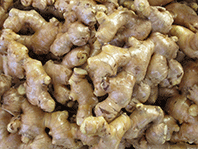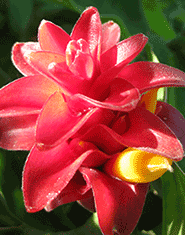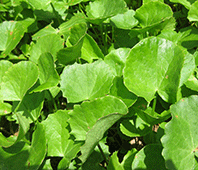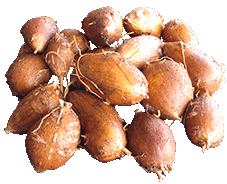| Organic Seeds | Edible Plants | Organic Pest Controls | Books | Tools, Propagation & Fertilisers | Sprouting & Microgreens | Poultry Supplies | Specials & Gift Ideas |

Top

We will send an email to this address*
when is next available
* we will use this email address only for this notification and then we will delete it.
 Home
Home
Green Harvest Organic Gardening Supplies is permanently closed as of 5pm on 1-11-2023.
We will not be taking orders by this website, in person, by phone or email. Our display garden and retail shop are closed forever.
Read more...
Phone:07 54357000
Phone calls will only be responded to sporadically and only in reference to orders placed prior to 2-11-2023. All the useful growing and organic pest management research and resources are available on this website for a while still.
|
|
|
Preparing your planting area ahead of time is very worthwhile - for detailed growing
notes, click the link next to each plant.
List of all plant growing information |
 Dragon Fruit 'Aztec Gem'
UT
Dragon Fruit 'Aztec Gem'
UTSelenicereus spp syn. Hylocereus spp Not to Norfolk Island, NT, SA, TAS or WA Syn. pitahaya, pitajaya. 'Aztec Gem' has deep purple flesh with a fruity, sweet taste. Dragon fruit can be grown directly in the ground with a strong support or in large containers. Avoid planting underneath trees as the fruit will be out of reach and the vine is so heavy it can break branches. A strong trellis 1.8 to 2 m high is ideal. It fruits best once it has reached the top of support and the branches hang outwards and down. 'Aztec Gem' is a moderate grower and self-pollinating but hand pollination will increase the yield. Dragon fruit are best suited to tropical and subtropical areas. Grow it in partial shade in a very well-drained fertile soil. Provided in mini pots. GD101 GD102Save $1.90 |
 Egyptian Spinach
Egyptian Spinach
 UT
UTCorchorus olitorius Not to Norfolk Island, NT, SA, TAS or WA Syn. molokhia, malu khia, melokheya, meloukia, salad mallow, West African sorrel. Egyptian Spinach is an attractive bright plant with small yellow edible flowers. It is a very hardy, fast growing, annual leafy green to 1 metre tall. It is highly nutritious, medicinally useful and a good chook forage. The young leaves are used in salad, older leaves and the shoot tips are cooked as spinach and are high in protein. The young pods are also edible. It self-sows readily. Suitable for warm temperate, subtropical and tropical areas. Provided in mini pots. GE102 Are you looking for Egyptian Spinach seed? |

 Elderberry
UT
Elderberry
UTSambucus nigra Not to Norfolk Island, NT, SA, TAS or WA Syn. black elder. Elderberry has been in use as a wild food plant for thousands of years. It is a deciduous shrubby tree that can grow more than 3 - 4 metres tall but is best kept pruned for an easier harvest. The traditional use of the ripe berries in Europe has been jams, jellies and wines but it is now attracting attention for its anti-viral properties. The clusters of small cream-coloured flowers are used as a tea or cordial. Immature berries and all other parts of the plant are toxic and should not be eaten. Cooking the berries is desirable to reduce the risk of any toxicity. The flowers are attractive to butterflies and native bees. Elderberry prefers full sun and a fertile well-drained soil. The plants can sucker vigorously so grow it somewhere that it can be easily controlled. Growing it in a big (400 L) planter bag is one way to limit its growth. To prevent it becoming a possible weed it should be netted when fruiting. It is a recommended that you check with your local government for its weed status in your area. Provided as one crown. GE105 Provided in mini pots. GE107 GE108Save $1.90 |
 Everlasting Onion
H
UT
Everlasting Onion
H
UTAllium cepa var. perutile Not to Norfolk Island, NT, SA, TAS or WA Syn. ever-ready onion, perpetual spring onion, perutile onions, sybies, ciboule vivace, ewige zwiebel. Everlasting onions are a useful, clump-forming perennial onion with a growth habit similar to chives, but slightly larger. It is usually evergreen and the tops can be used like a spring onion and the bulbs can be harvested and used for cooking. The bulbs are about the size of a shallot with a reddish skin. A great addition to your perennial vegetable garden, resilient to all kinds of weather and pests. Clumps can be perpetually divided to propagate new plants. Plant in rows 10 cm apart in a fertile well-drained soil. Provided as tubestock. GE109 |
 Fig 'Black Genoa'
UT
Fig 'Black Genoa'
UTFicus carica Not to Norfolk Island, NT, SA, TAS or WA Fig 'Black Genoa' is a deciduous, ornamental, self-pollinated tree, between 2 and 6 metres high. The large purplish-black fruit have a red flesh with sweet rich flavour. It grows best in full sun on a well-drained soil with a neutral pH of 6.6 - 7. It is very productive, with 2 crops a year. The fruit can be eaten fresh, dried or used to make a delicious jam. It is usually pruned to a multi-stem vase shape but can also be grown as an espalier or as a hedge. Although all figs prefer a less humid climate with dry summers, 'Black Genoa' performs well in subtropical areas. It is drought tolerant once established. Provided as tubestock. GF106 GF107Save $1.90 |
 Galangal 'Monkey Puzzle'
UT
Galangal 'Monkey Puzzle'
UTAlpinia galanga Not to Norfolk Island, NT, TAS or WA Syn. Thai ginger, laos, greater galangal, galingale, kha. An attractive foliage plant with spikes of small white flowers that grows best under trees in a moist position. The roots are large and white and used like ginger in Thai cooking but with a greater fragrance. Young shoots can also be steamed and eaten. Suitable for warm temperate to tropical areas. More info on growing galangal... Provided as a rhizome per pack. GG121 Provided as tubestock. Not to Norfolk Island, NT, SA, TAS or WA GG171 GG172Save $1.90 |

 Galangal 'Red'
UT
Galangal 'Red'
UTAlpinia galanga Not to Norfolk Island, NT, TAS or WA Syn. Thai ginger, laos, greater galangal, galingale, kha. Attractive foliage plant that will grow under trees in a moist position. The roots have a distinctive reddish colouring and are used like ginger in Thai cooking but with a greater fragrance. Young shoots can also be steamed and eaten. Suitable for warm temperate to tropical areas. More info on growing galangal... Provided as a rhizome per pack. GG127 GG128 Provided as tubestock. Not to Norfolk Island, NT, SA, TAS or WA GG129 GG140Save $1.90 |
 Garlic 'Glenlarge'
OG
Garlic 'Glenlarge'
OG
Allium sativum Artichoke Group Not to Norfolk Island, NT, TAS or WA Good choice for warm climates Garlic 'Glenlarge' is a soft-neck type with a purple skin, selected by Gatton Research Station as being suitable for Australian conditions, from the Atherton Tableland to SA. It is a top-setting, early, day-length neutral garlic, which makes it far more suitable for warmer areas, than many other garlic cultivars. Each bulb weighs approximately 37 g; there is an average of 11 planting pieces (large cloves) per bulb; with an average of 27 bulbs per kg. More info on growing garlic... GG105 SOLD OUT FOR 2023 GG106 SOLD OUT FOR 2023 If you live from North of Brisbane we also highly recommend you plant Italian Pink |
 Garlic 'Italian Pink'
UT
Garlic 'Italian Pink'
UTAllium sativum Artichoke Group Not to Norfolk Island, NT, TAS or WA Good choice for warm climates Garlic 'Italian Pink' is a soft-neck type with a pink-purple skin and medium bulb developed by the Gleeson family of WA. It is an Artichoke type adapted to wide variety of climates. A day-length neutral garlic that does not like very cold, wet winters. It is one of the main types grown commercially in WA, northern NSW and QLD. The flavour is very good, rich, sweet and spicy, with moderate hotness. The flavour improves if the bulbs are kept for a few weeks after curing and before use. Each bulb weighs approximately 44 g; there is an average of 10 to 12 planting pieces (large cloves) per bulb; with an average of 25 bulbs per kg. More info on growing garlic... GG160 SOLD OUT FOR 2023 GG161 SOLD OUT FOR 2023 If you live from North of Brisbane we also highly recommend you plant Glenlarge, which has been selected by researchers for QLD. More info: https://www.australiangarlic.net.au/garlic/subtropical-group/glenlarge |
 Garlic Chives
UT
Garlic Chives
UTAllium tuberosum Not to Norfolk Island, NT, SA, TAS or WA Syn. Chinese chives. Flat leaf variety of chives with a garlic flavour, attractive white flowers; leaves and green flower buds used in Asian cooking. Suitable for temperate, subtropical and tropical areas. More info on growing garlic chives... Provided in mini pots. GC117 GC118Save $1.90 Available as seed... |
 Ginger 'Jumbo'
UT
Ginger 'Jumbo'
UTZingiber officinale Not to Norfolk Island, NT, SA, TAS or WA Syn. keong, khing, gung, halia, jahe, luya, shooga. Very easy to grow for a year round supply in frost-free areas. We plant in spring and harvest in autumn to avoid our cold winter. It is a shade-loving perennial herb native to the tropics and likes moisture. More info on growing ginger... Provided as tubestock. GG180 |
 Ginger - Myoga
Ginger - Myoga
 UT
Rare
UT
RareZingiber mioga Not to Norfolk Island, NT, TAS or WA Syn. Japanese ginger. Myoga ginger is a perennial rhizome native to Japan, Korea and China. The leafy stems grow to 1 metre high with wide green leaves, similar in appearance to turmeric. Beautiful orchid-like pale yellow flowers bloom in autumn at ground level. In spring the spicy young shoots are harvested and used like the flower buds. The flower buds are used as a garnish, in soups, tempura, pickled and as a spice. Myoga requires a rich moist soil and the partial shade of its natural woodland habitat. It is the cold hardiest of the gingers and frost tolerant, especially if well mulched. It dies back in winter and will reshoot in spring. Suitable for subtropical and temperate areas. More info on growing ginger... Provided as a rhizome per pack. GG158 Provided as tubestock. Not to Norfolk Island, NT, SA, TAS or WA GG156 |
 Ginger - Pink Torch
Ginger - Pink Torch
 UT
UTEtlingera elatior Not to Norfolk Island, NT, SA, TAS or WA This beautiful edible flower is really too pretty to eat but if you want to try, it is picked it at the bud stage. The buds have piquant, ginger-like flavour and add vibrant colour sliced as a garnish or used thinly sliced in a salad. The young, tender edible leaves are cooked with rice and the fruits are candied. It is a perennial tropical plant that can grow quite large to 3 - 5m high and spreads as a clump. The gorgeous, large, waxy pink flowers appear in summer. The entire shape of the bloom and flower stalk is said to resemble a torch, hence the plant's common name. It prefers a warm, humid climate but will grow as far south as Sydney in a sheltered microclimate. It will grow from full sun to partial shade in a protected position and requires moist, well-drained soil, rich in organic matter. The flowers are popular in floral arrangements, as well as in cooking for their sour-sweet flavour. The edible torch gingers are commonly called Bunga Kantan in Malaysia. More info on growing ginger... Provided as a rhizome per pack. GG100 |
 Ginger - Puyang
Ginger - Puyang
 UT
UTZingiber aromaticum Not to Norfolk Island, NT, SA, TAS or WA This shade-loving, ginger species grows to about 1.5 m. It is ornamental, with small yellow flowers appearing on striking red cones produced at the base of the plant. It is cultivated in Indonesian kitchen gardens, the tips of the young rhizomes, young leaf shoots and the yellow flowers are eaten raw or cooked with rice or used as a flavouring. The rhizome is fibrous, strongly aromatic and used medicinally. More info on growing ginger... Provided as a rhizome per pack. GG143 Provided as tubestock. GG169 |
 Ginger - Red Back
Ginger - Red Back
 UT
UTAlpinia caerulea Syn. native ginger. Not to Norfolk Island, NT, SA, TAS or WA This hardy, native ginger has lush, glossy-green leaves with attractive burgundy undersides. Both the leaves, bright blue berries (but not the seeds) and rhizomes are all edible and mildly ginger flavoured. It forms a clump 2 metres high and 2 metres wide. Small, fragrant white flowers appear from late spring to early summer. It is a native understorey in rainforest so prefers a warm, humid climate but will grow as far south as Sydney in a sheltered microclimate, it doesn't tolerate frost. It prefers a shady spot in a protected position and requires moist, well-drained soil, rich in organic matter. Provided as tubestock. GG198 GG199Save $1.90 |
 Ginger - Red Tower
Ginger - Red Tower
 UT
UTCostus comosus Not to Norfolk Island, NT, SA, TAS or WA Red Tower Ginger is ornamental and has edible flowers. The deep red bracts wrap around a bright yellow flower that can be thinly sliced and added to salads, it has a spicy ginger flavour with citrus overtones. The leaves are emerald green with an attractive spiralling appearance. It grows to 2.5 m high and can form a large clump, with flowering nearly year-round, both from the tops of the stems and from basal stems. It is surprisingly cold tolerant and will grow in most areas of Australia. Provided as a rhizome per pack. GG201 Provided as tubestock. GR141 GR142Save $1.90 |
 Globe Artichoke
UT
Globe Artichoke
UTCynara scolymus Not to Norfolk Island, NT, SA, TAS or WA Globe artichoke is an herbaceous perennial to 1.5 m high, suitable for temperate and Mediterranean climates. The large flower buds are deep green faintly tinged with purple with solid hearts, between 7.5 and 12.5 cm wide. The edible flower buds are a delicacy, pick them before they start to open. The striking grey-green foliage and spectacular flowers add beauty to the garden. Globe artichoke has a restricted climatic range and prefers cool, moist summers and mild winters. Chilling is needed to produce buds. A deep, rich, well-drained, alkaline soil is required; artichokes will grow in a pH range of 6.5 - 7.5. Growing in humid, subtropical and tropical areas is very difficult, even if the plants grow well, insufficient chilling will make bud production unlikely or of very poor quality. Excellent drainage is required and raised beds will help. Provided in mini pots GG141 GG142Save $1.90 |
 Gotu Kola
UT
Gotu Kola
UTCentella asiatica Not to Norfolk Island, NT, SA, TAS or WA Syn. arthritis plant, pennywort, Indian ginseng. Gotu Kola is a perennial, creeping groundcover that grows best with partial shade. The flowers are small and insignificant. It is similar in appearance to Native Violet. Gotu Kola has been known for centuries as a medicinal plant particularly in Ayurvedic medicine. Suitable for subtropical and tropical areas. Provided in mini pots. GG131 GG138Save $1.90 |
 Grape 'Black Muscat'
UT
Grape 'Black Muscat'
UTVitus vinifera Not to Norfolk Island, NT, SA, TAS, VIC or WA Syn. 'Muscat Hamburg' 'Black Muscat' is a popular table grape and used for wine making in Australia. It is also suitable for drying. The large fruit are black with sweet distinctive aroma. Grapes need a well-drained soil and good air flow; too much humidity can cause mildew. Grape vines climb vigorously and need a strong trellis; it is best to plan for protection from birds when designing the trellis. Depending on area harvest is between November and February. Provided in 125 mm pots. GG195 |
 Groundnut Hopniss
UT
Groundnut Hopniss
UTApios americana Not to Norfolk Island, NT, SA, TAS or WA Syn. Indian potato, hodoimo Groundnut is a native American food plant, commonly wild-foraged. It is a climbing legume with edible tubers that dies down in winter. The small, plum coloured clusters of pea flowers are very pretty. It is a hardy and easy to grow plant and provides large harvests of small to medium tubers. The fleshy tubers are easy to clean and cook and can be steamed, roasted, boiled or mashed. The taste is slightly sweeter than potatoes and they are more nutritious with three times the protein content. The vines produce an abundance of small tubers the first year, and larger ones the second year. It prefers a rich, moist soil and requires a trellis to climb on. Grow it in full sun. Suitable for temperate and subtropical areas. Provided as a tuber. GG175 |

 Grumichama
UT
Grumichama
UTEugenia brasiliensis Not to Norfolk Island, NT, SA, TAS or WA This is really a 'must have' small, shrubby tree if you live from a warm temperate area to the tropics. It is very attractive with glossy leaves and starry white flowers and produces fruit similar to a cherry in size and appearance. It doesn't have the dark, rich flavour of a cherry but is still very enjoyable. It will tolerate down to minus temperatures and has the added advantage of being resistant to fruit fly. It makes a good screening plant or fruiting hedge, is useful in the poultry food forest as it gives the chooks good shelter from hot sun and any circling hawks. It doesn't like drought and requires consistent watering, it will also tolerate partial shade. Unfortunately birds are keen on the fruit too, so prune it regularly to keep it bushy so a bird net can be thrown over it. Provided as tubestock. GG165 |
|
Green Harvest specialises in plants which are:
|
Not to NORFOLK ISLAND, NT, SA, TAS or WA
SORRY but due to quarantine restrictions between Australian States no plants at all can be ordered by residents of Norfolk Island, Tasmania and Western Australia. These restrictions are very important as they prevent the spread of plant pests and diseases. No potatoes, garlic, shallots, strawberries or tubestock can be sent to South Australia. No tubestock can be sent to Northern Territory.
SORRY but due to quarantine restrictions between Australian States no plants at all can be ordered by residents of Norfolk Island, Tasmania and Western Australia. These restrictions are very important as they prevent the spread of plant pests and diseases. No potatoes, garlic, shallots, strawberries or tubestock can be sent to South Australia. No tubestock can be sent to Northern Territory.
 Home
Home
Green Harvest Organic Gardening Supplies is permanently closed as of 5pm on 1-11-2023.
We will not be taking orders by this website, in person, by phone or email. Our display garden and retail shop are closed forever.
Read more...
Phone:07 54357000
Phone calls will only be responded to sporadically and only in reference to orders placed prior to 2-11-2023. All the useful growing and organic pest management research and resources are available on this website for a while still.
No liability will be accepted by Green Harvest, its owners or employees as to the accuracy of any information. No responsibility will be taken for damage to property or persons due to information given about a product or technique. No responsibility will be taken for the loss of a crop or income due to information given about a product or technique.
 Shopping here is private and secure.
Shopping here is private and secure.
Copyright © 2001 - 2024 Green Harvest Organic Gardening Supplies
No part of this website may be reproduced without permission of the owner

